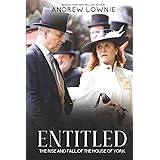The Oxford Comma Controversy: Are We About to Rewrite the Rules Forever?
Ever stumbled over a list and wondered if that last comma is a friend or a fiend? The Oxford comma – beloved by some, shunned by others – can feel like that elusive punctuation ghost haunting your writing. It’s fascinating how such a tiny mark sparks fierce debates, influences style guides, and even forces writers to juggle semicolons at times. Whether you’re team Oxford comma or not, understanding when and why to use it (or switch gears entirely) can save your prose from confusion—and, trust me, your readers will thank you for the clarity. Ready to dive into the quirks and controversies of the Oxford comma and discover how its absence might just change your punctuation game? Let’s get into it! LEARN MORE

WRITING WELL
Including why not using the Oxford comma in a list may require a punctuation switch
The subject of many debates, works of writing, and even at least one song,* the Oxford comma is the last comma in a series of three or more elements before a conjunction such as “and” or “or.” Easy enough, right?
Unfortunately, use of the Oxford comma often depends on the style guide that applies. For example, while news outlets usually use the AP Stylebook, which generally doesn’t require the Oxford comma, book publishers and academic journals usually use the Chicago Manual of Style, which does. Meanwhile, organizations such as corporations and nonprofits that understand how important it is to be consistent in their marketing and advertising make in-house decisions on whether to use the Oxford comma — among many other decisions related to editorial style. If you write for a specific organization or publication, be sure to know which style rules apply.
As with any style rule, consistency is key when it comes to the Oxford comma. If the style guide you’re following states that the Oxford comma should be used, then a document that includes a series such as “Oreo, Ferraro Rocher, and Nutella” (which is correct due to the style guide you’re using) should not include a series that reads “melon, peach and strawberry” (which would be incorrect and inconsistent). The difference is simply that one series includes the Oxford comma and one doesn’t.
Those who prefer to use the Oxford comma often point out multiple reasons: to avoid not only potential confusion but the possible need to add the Oxford comma anyway or switch from using commas to semicolons. Always using the Oxford comma usually eliminates such issues.
Consider this potentially confusing example of a series written without an Oxford comma: “The boy visiting the show’s set was eager to see the actors, Grover and Ernie.” Without the Oxford comma before the conjunction “and,” this sentence could be read to mean that the child only wants to see two actors named Grover and Ernie. With the Oxford comma, one doesn’t have to be familiar with the show “Sesame Street” to understand the boy is eager to see multiple actors of…


















